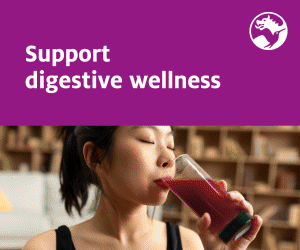These drivers for change could be viewed as a necessary evil – a stick enforcing the adoption of new solutions and processes to provide additional data – however, this is not necessarily the case.
As Lee Metters, Group Business Development Director, Domino Printing Sciences, explains, traceability and transparency require little more than a humble, serialised code – the vital link that joins a product to its online data, provenance and history. Moreover, organisations can use the data afforded by serialisation to achieve much more than compliance.
Spotlight on security
The last decade has seen a marked increase in the number of governments and regulators requiring a greater and more stringent exchange of data to protect patient and consumer safety. Often this is achieved via 2D codes and serialisation – assigning an individualised or variable code to items so that they can be uniquely identified, tracked and traced throughout their lifetime.
Regulatory serialisation requirements have been restricted to pharmaceuticals, medical devices and tobacco until recently. However, as global demand for more transparency within supply chains increases, we see the requirement expand into other industries, particularly food and beverage.
For example, Russia’s Chestny ZNAK track and trace system was inaugurated in 2017 for prescription and OTC medicines and has since been expanded to include bottled water and milk. In addition, it is anticipated that the next update of the US FDA’s Food Safety Modernization Act will require the serialisation of certain food and beverage products in the US.
Supply chain opportunity
Typically, compliance obligations come at a cost to brands, with little commercial gain. Although the prospect of new regulatory serialisation requirements might, therefore, seem daunting, the reality is that the serialisation of products can provide significant benefits to brands. For instance, enabling visibility on how products move through supply chains.

As the pharma industry has found, the end-to-end traceability of products via scannable, serialised 2D codes can present an opportunity for brands to run their supply chains more efficiently and drive out potential causes of waste. These same benefits apply to the food and beverage industry, and with the spotlight on global food waste reduction, arguably, the opportunity for change has never been more significant.
Variable code scanning at each step in the supply chain – from the initial raw material supply all the way through to retail sales data – can allow supply chain partners to access information on the provenance and journey of each product. This increased visibility can provide opportunities to identify issues and sources of waste at each step of a product’s journey, providing the insights needed to run supply chains more efficiently.
Sharing data across supply chains can also provide insight into supply and demand levels in different regions, presenting an opportunity for manufacturers to produce in a way that matches downstream and upstream needs. The benefits of improved supply chain efficiency help reduce waste and drive out inefficiencies and enable brands to offer a greater variety of fresh food products, with increased shelf-life, to their consumers.
The push for transparency
The benefits of this kind of deep, granular supply chain data extend far beyond the brand level – as it is now widely recognised that more transparency in food supply is key to sustainable growth and development.
Indeed, amongst the 17 UN Sustainable Development Goals is a focus on ensuring sustainable consumption and production patterns (UNSDG 12), with a commitment to halve per capita global food waste at the retail and consumer levels and reduce food losses along production and supply chains, including post-harvest losses, by 2030.
In the UK, the National Food Strategy – an independent report for government – has recommended creating a National Food System Data programme to collect and share data to improve the nation’s health, wellbeing and the environment. It advocates that the programme should include data from beyond the farm gate: “on food production, distribution and retail and the environmental and health impacts of that food.”
Similarly, other governments are looking at solutions to provide an audit trail of data on the supply chain of food products.
In 2020, the US Department of Agriculture proposed implementing blockchain technology to trace the supply of organic food products. The Food and Drug Administration of the Chinese Chongqing Yuzhong District has tested blockchain in facilitating traceability and quality assurance in food and drug supply chains.
Indeed, China is one of the world’s most rapid adopters of blockchain solutions, with the central government expected to release a national blockchain standard later this year.
In addition, organisations such as TagOne, WholeChain, and IBM also offer blockchain-enabled solutions for the food and beverage industry to improve traceability, with the underlying goals of reducing food waste – improving food freshness and safety – and increasing sustainability and supply chain efficiency.
Is blockchain the answer?
For many businesses, the concept and understanding of blockchain remain vague. Yet every food and drink manufacturer will be familiar with variable data labels and serialised codes – the underlying product codes that provide traceability, and transparency, by linking physical products to the online world.
The first and simplest step towards greater supply chain efficiency is through the adoption of variable 2D codes to facilitate data exchange.
Unique to each product, serialised codes will provide the greatest level of data, but even batch-level identifiers can provide a certain degree of transparency.
An additional step is to have a background system that collects data at each stage of the supply chain and stores the information to be instantly accessible. A blockchain-enabled system could then provide additional, immutable assurance that the information is correct.
The variable 2D code is the vital link that joins a physical product to all its online data at each step.
Conclusion
Through regulation, corporate ESG initiatives, and consumer demand, the world is on a journey to provide better identification and faster sharing of data which can have significant benefits in supply chain efficiency. Some organisations can help provide the back end too; that is, blockchain-enabled solutions or supply chain systems.
For these solutions to work, a link to the physical product is required, which means manufacturers need to ensure their systems are equipped to provide that link.
The good news is that embracing serialisation does not need to be challenging. The underlying variable data coding technology is already in place to provide traceability and authentication – to provide the missing link between manufacturers’ physical products and the online world and enable genuinely sustainable food supply chains.




